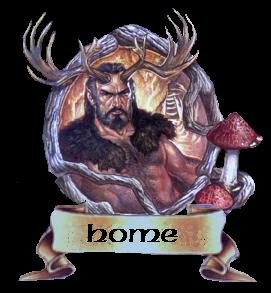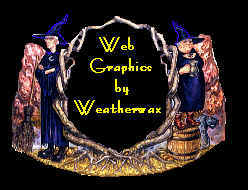|
August
2
Also known
as: Lughnassadh (Celtic), Cornucopia (Strega), Thingtide
(Teutonic)
(NB:
Lughnassadh, the Celtic festival in honour of the Sun God, is held
on the 7th)
This
is the celebration of the first fruits of the harvest. The Sun
King, now Dark Lord, gives his energy to the crops to ensure life
while the Mother prepares to give way to her aspect as the Crone.
Now is the time to teach what you have learned, to share the
fruits of your achievements with the world. Wheat weaving,
such as the making of corn dollies, is traditional. Bread is baked
and the altar is decorated with fruits and vegetables of the
harvest.
Lammas/Lughnasadh
is the first of three harvest Sabbats. Decorate the altar and
house with grains such as barley, oats and wheat -- also fruits
and veggies. Substitute bread for crescent cakes. The Sun God is
waning, but the Goddess is full of abundance. Even as he wanes, he
lives on inside her as her child. Begin gathering and drying
herbs, flower, grains or seeds for spell-working in the next year.
Make magickal oils now with fresh herbs.
Braid
onion and garlic charms. Onion is sacred to the sun -- because of
its shape, and its dye is a golden amber to burnt apricot (for egg
dye at Imbolc or general purposes). When the onion is cut, it
reveals the symbolism of the moon. Garlic, too, is sacred to the
moon -- the crescent shape of the cloves. It exorcises evil and
protects. A good time for cat magick.
(Author
Anonymous)
|
Back
to top
As
it is a harvest, the God figures more prominently here than
the Goddess, though she, too, is revered and thanked for
bringing the fruits of harvest. The altar and circle can be
decorated with sheaves of grains such as barley, oats or
wheat. Fruits are appropriate, as are breads. In fact, bread
may take the place of crescent cakes and cider instead of
wine in the simple feast. The corn dolly that was woven at
Imbolc may take her place on the Lughnasadh altar as well.
The altar cloth shall be red, and the Altar candles shall be
orange. Lay out your altar with all your usual tools, light
the altar candles and the incense, and cast the sacred
circle. Then invoke the God and the Goddess.
Lift some of the grain in your hand as you stand
before the altar, facing East. Say: "Now is
the first harvest of the year, the time when the fruits of
nature give of themselves that we may survive. Now, as the
God prepares for death, may his sacrifice help us to
understand and accept the sacrifices we must make in our own
lives. Now, as the Goddess enters crone-hood, may she
whisper her secrets and Magick in our ears, that we may put
them to good use, and not misuse."
Rub
the heads of the grain with your fingers so that the grains
fall onto the altar.
This is a ritualised version of the threshing of
grain, an act considered sacred in pre-Christian Ireland.
Then lift a piece of fruit, and take a bite out of it,
savouring it. Say: "I partake of the fruits of
the first harvest, that it's energies might aid mine in my
search for wisdom, goodness, and perfection. Oh Goddess of
the moon, Mother of all, oh Lord of the sun, Father to
everything, I thank thee for the bounty you have given me.
May I always remember to harm none, and may my actions
please you always."
Eat
the rest of the fruit. Works of Magick may follow. Feasting
may follow the ritual, with appropriate foods such as
breads, berries, crab apples, and any locally ripe produce.
After any such activities are finished, banish the sacred
circle.
~~o00o~~
It
is appropriate to plant the seeds from the fruit consumed in
ritual. If they sprout, grow the plant with love and as
a symbol of your connection with the Goddess and God.
Wheat
weaving (the making of corn dollies, etc) is an appropriate
activity for Lammas. Visits to fields, orchards, lakes
and wells are also traditional.
The
foods of Lammas include bread, blackberries and all berries,
acorns (leached of their poisons first), crab apples, all
grains and locally ripe produce. A cake is sometimes
baked, and cider is used in place of wine.
If
you do make a figure of the God from bread, it can be used for
the Simple Feast.
(excerpts from
Scott Cunningham's Wicca: A Guide for the Solitary
Practitioner)
Back
to top
|
|



|
|
|
|